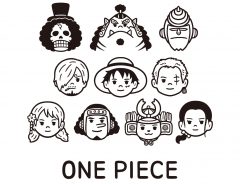- Tags:
- Anime / Charity / Donation / Naoto Date / Tiger Mask
Related Article
-

Tokyo Hotel offers collaboration rooms and plan for Makoto Shinkai’s “The Garden of Words”
-

Traditional Japanese Cutlery Maker Releases Neon Genesis Evangelion Craft Scissors
-

Give cheers with an impact with traditional Japanese cut Neon Genesis Evangelion drinking glass
-

Ghost in the Beer: OGA Brewing & “Ghost in the Shell: SAC_2045” collaborate on IPAs
-

Mizuno’s new athletic footwear is being nicknamed “Akira Shoes” because, well, look at them.
-

Celebrate 100 volumes and 1000 episodes of ONE PIECE with this special collection



It is often during the darkest times that our lives are illuminated by displays of the brightest generosity. Indeed, while our news feeds in recent weeks have been full of COVID-19 doom and gloom, we have also been treated to sparkling stories about charitable donations and touching displays of human comradery.
In Japan, however, generosity is rarely displayed so publically, especially by the media. It happens of course, and in typical Japanese style, it is often subtle. In typical Japanese style, it sometimes even involves manga and anime...
But what have subtlety and the effervescent and fantastical world of anime got in common? And how does all this connect to acts of feel-good generosity? The answer to these questions lies in the mysterious “Tiger Mask Movement.” A phenomenon in Japan which has seen spates of anonymous donations in the name of anime and manga characters. Read on to unravel the secrets of Japanese covert generosity!
Tiger Mask: The Beginning
On December 25th, 2010, a well-built man crept across the snow-smattered parking lot of a Children’s Guidance centre in Gunma prefecture. Unable to clamber down the chimney, because 1, this is Japan so there are no conventional chimneys, and 2, this man was not Santa, he deposited on the doorstep of the centre 10 ransel bags. Ransel, or ランドセル, are the token leather satchels worn by Japanese elementary school children. They cost ¥30,000 each on average. Along with the bags, he left a note that read:
“Please use these bags for the children.”
Signed: Naoto Date
The bags were distributed by the centre to orphans in Gunma prefecture who would be starting school the next year. While broad smiles no doubt spread across the children’s faces, so too did a broad sense of intrigue spread across Japan. This was not curiosity about who this Naoto Date was, however; everyone knew the name already. For the people of Japan, Naoto Date was synonymous with 1960’s manga hero “Tiger Mask.” And they were intrigued because this striking act of generosity seemed to be straight from the pages of that manga!
The Significance of Tiger Mask and Donation
“Tiger Mask” is the name of a pro-wrestling manga that follows the career of protagonist Naoto Date who wrestles under the alias, Tiger Mask. In the manga, Date fights for the same orphanage where he himself grew up.
The donation made in Gunma on Christmas Day was clearly inspired by the “Tiger Mask” manga and quickly became known as “Tiger Mask Donation” in Japan. The single instance made such a striking impact on the nation that copy cat donors soon emerged, sparking a spate of donations across Japan and beginning what has come to be known as the Tiger Mask movement.
From Tiger Mask to Tiger Masks
Since the original donation in 2010, anonymous donations of ransels, money, and even toys have been made in the name of Naoto Date to Children’s guidance Centres and similar institutions. Some interesting examples include:
Donation to Odawara Children’s Guidance Centre - January 1st, 2011
The second confirmed Tiger Mask Donation was made in Odawara near Tokyo to a Children’s Guidance Centre. The donated items included 6 ransel bags. They were found by a security guard on New Year’s Day along with the following note: “The donation of backpacks in Gunma last year moved me deeply. My heart skipped a beat when I heard the news. Thinking I might do something as well, I offer these gifts. May the Tiger Mask movement live on.” Signed: Naoto Date The first donation was important, but we love the second donation because number two is what gets the movement moving!
Donation to Shimazoe no Oka orphanage in Okinawa, January 7th 2011
A man disguised by a helmet left 3 randsel backpacks at an orphanage in Okinawa. He left this great note: "I offer this somewhat belated New Year's gift. Please give everything you've got in studying and sports, and grow up to be wonderful adults.”
Signed: Naoto Date
Donation to Children’s Guidance Centre in Atsugi City, Kanagawa, January 9th 2011
This donation was found in the parking lot of a Guidance Centre in Atsugi City. Instead of backpacks, however, this Tiger Mask left 22 models and toys for the kids. Some of the toys included Gundams, hot wheels, Rubix cubes, and plush toys. As with other instances, a note was left saying simply:
“I’m sorry these aren’t backpacks.”
Signed: Naoto Date
We’re sure the kids didn’t mind Naoto-san. After all, it’s important to give children the tools to foster their imagination too.
We personally feel it’s great to see a manga have such a positive effect in the real world. But what is it that makes “Tiger Mask” donation so appealing to the Japanese? Other than a love of manga of course!
© PR Times, Inc.
Anonymity of Cool in Cool Japan
Monthly donations to your charity of choice, running a marathon to raise money for a cause you care about, even petitioning others to donate to your cause; all these are common practices in many parts of the world. In Japan, however, the culture of donating to charity is less established. Japan Today reported figures that in 2016, donations to charity in Japan totaled 0.14% of the country’s GDP, compared to the US where individuals donated in total 1.4% of the country’s GDP.
There’s a lot of potential reasons for a paucity of public donations, including: limited tax benefits for charitable donations in Japan, less social disparity, and an absence of strong Christian influence on Japanese culture. However, the “Tiger Mask” movement offers an interesting insight into cultural attitudes towards donations in Japan.
The popularity of the movement suggests that individuals in Japan are not uncharitable. But the anonymity that donating in the name of Naoto Date affords, may be the reason why “Tiger Mask” donation became popular. After all, modesty is an important part of Japanese culture. Making a show of personal donation would be considered culturally inappropriate. However, doing a good deed as a popular manga character enables public recognition of good in the world without making it about you in any way. In Japan, that’s pretty cool!
The Changing face of the Tiger Mask Movement
The Tiger Mask Movement has continued to live on through donations which continue to happen in nature but in a different name. Over time, donors have begun to adapt their alias to characters from series other than Tiger Mask. We recently wrote about a Tiger Mask donation of 200 surgical masks to Nursing schools in Iwate prefecture, in which the donor used a Kimestu no Yaiba character alias. Other examples of more modern donors include a donation of four bicycles to an orphanage in Hamamatsu City, Shizuoka Prefecture. The anonymous donation was made by a man claiming to be from the Shizuoka Chapter of the “Speedwagon Foundation” which appears in Jojo’s Bizarre Adventure. It’s heartwarming to see manga fans choosing their favorite characters as a vehicle for good deeds.
The Tiger Mask movement has brought a lot of joy to a lot of kids and people in need throughout Japan. Fortunately, there are hundreds of thousands of volumes of source materials for altruistic manga and anime fans to keep donating for decades to come.